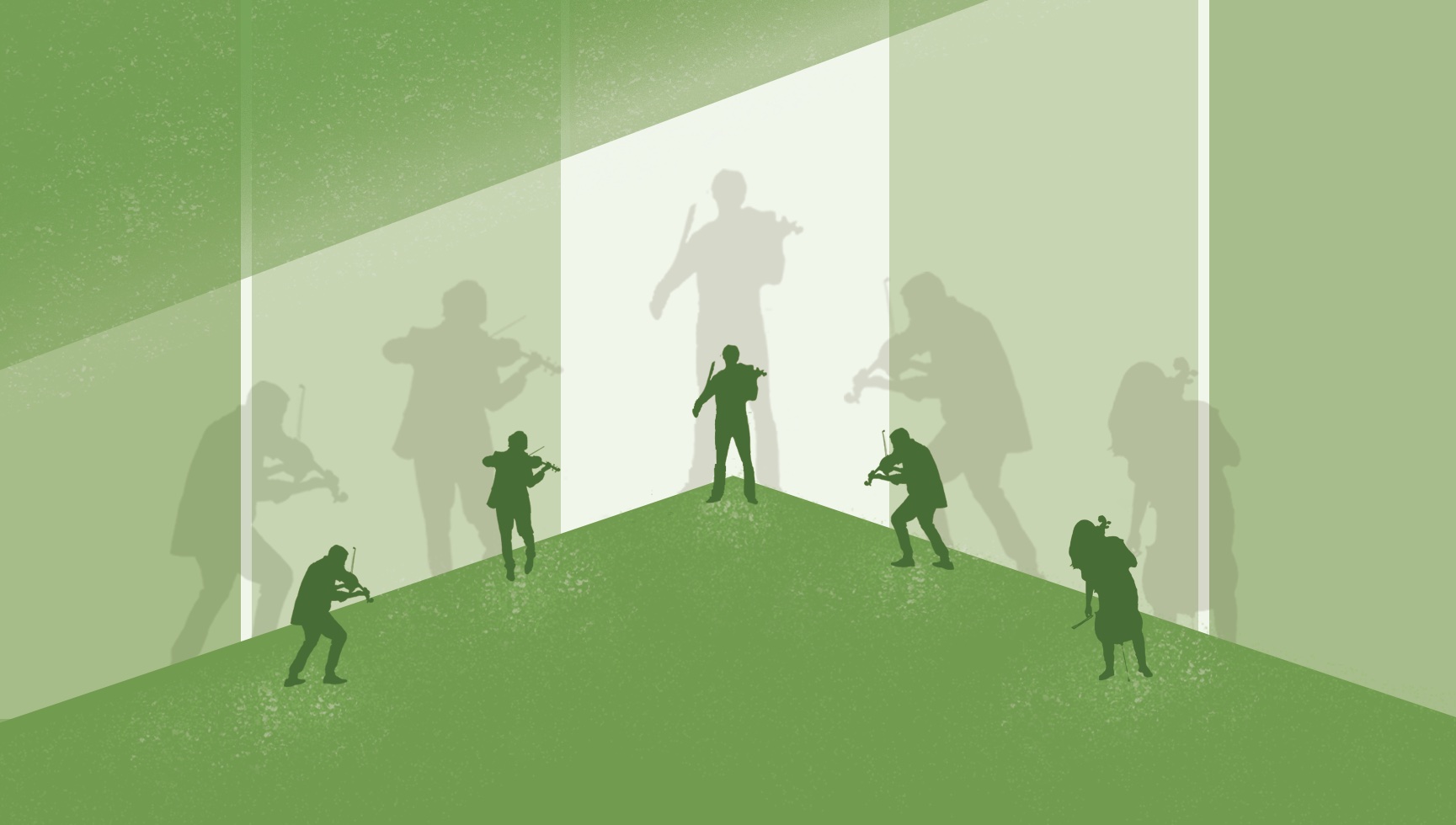The string quintets of Mozart and Brahms are often heralded as being amongst the two composers’ most accomplished works – a bold but understandable claim once you’ve experienced the particular pleasure to be found in these perfectly formed pieces. Join us as we share two of our favourites – Mozart’s absurdly lovely C major quintet, with its underlying dramas all bound together in satisfying lyrical sweeps, and Brahms’ gutsy, romantic adventure through contrasting musical styles.
- Mozart
String Quintet No.3 in C major - Brahms
String Quintet No.1 in F major - Mendelssohn
Capriccio in E minor
A word from Tristan
by Tristan Gurney
The string quintets of Mozart and Brahms are cherished as being amongst both composers’ finest and most accomplished works. In fact, Mozart was so proud of them, he even said so himself! Both composers add a viola to the usual string quartet format, and both seem to use the form as a way of exploring how to present all the depth and power of their larger-scale works, but on a smaller scale; a miniature model.
Mozart and Brahms explore very personal emotional worlds in these works and you really feel that they are bearing the inner reaches of their soul in the music. The challenge this provides in playing the music is exciting and one that lends itself very well to a live performance as we have the opportunity and privilege to experience and channel such powerful emotion and drama to you, the audience.
To showcase these wonderful quintets, we’ve chosen two which we feel go well together: Mozart’s quintet in C major, with its underlying tensions all bound together in satisfying lyrical sweeps and fine melodies, and Brahms’ rich, melodic adventure through contrasting musical styles, from echoes of Baroque dance to sweet Romantic melodies, to complex counterpoint, ending with a fantastically energetic and gutsy finale.
Some of our concerts also feature excerpts from a selection of letters written by Mozart and Brahms. Curated by opera and stage director Stasi Schaeffer, we hope you enjoy the extra context and contour they give to the music.
Notes on the Music
by Rosie Davies
Mozart’s string quintets seem to occupy quite a protected, ring-fenced place in the composer’s musical output. For a composer who is as much praised as he is prolific, his six string quintets certainly seem to nestle in the prized soft spot of many musicologists.
It’s easy to see why. There’s the fact that he was one of the first composers to really explore them seriously; Boccherini had composed over a hundred, but they explored the scoring of two violins, viola and two cellos, and his predecessor-contemporary Haydn hadn’t touched them at all. There is also their stand-out genius. Each and every one of the six is not only unarguably brilliant in terms of its simultaneous complexity and clarity; each one also allows us the opportunity to take a closer look at the intricacy of Mozart’s larger works, on a microcosmic scale.
This one in particular takes an opening phrase heard at the very start of the piece and builds the rest of the 30 minutes or so around it (without, it should be noted, any hint of boredom or over-simplicity marring the enjoyment). One of the ways it does this, in the first movement in particular, is through a slightly unnerving attitude towards phrases, pulling and stretching to give an impression of things not being quite right, and yet all done so subtly and so expertly that the overall impression is one of typical Mozartian cohesion and neatness whilst adding a layer of barely-conscious drama beneath; the layer which transports this quintet from goodness to greatness.
By widening the scope for the form with the addition of the viola, as well as creating these six perfect, dense gems, Mozart paved the way for the Romantic model – which some claim was then perfected and even transcended by Brahms…
***
“You have never before had such a beautiful work from me”, said Brahms to his friend Clara Schumann on his first ever string quintet. Always anxious about writing chamber music for strings, Brahms would reportedly run his works for violin past friend and violinist Joseph Joachim (who performed with B and Clara Schumann) – this one not only passed the test, but seemed to open the gates in terms of Brahms’ completion of a succession of accomplished chamber works for strings (his Piano Trio No.2, also composed in 1882; the Cello Sonata No.2, the Violin Sonata No.2, and the Piano Trio No.3 in 1886; and the Violin Sonata No.3 in 1888, and second string quintet in 1890).
It makes sense, with Brahms at the height of his powers and producing works of the depth and power of his third and fourth symphonies, to give just two examples, that he should not only find his groove with string writing – but also compose something of such differing feels, including nods to neo-Baroque, Classical and Romantic moods, within the one work and yet still present an assured, cohesive whole.
Many have commented on his following of Mozart’s, rather than Schubert’s, lead in terms of scoring, adding an extra viola rather than the extra cello of Schubert’s C major quintet – a possible indication of his ultimate grounding in Classicism. But there are allusions to so many other influential composers and forms in the actual piece. Haydn, in the central movement (a set of variations ‘a la Haydn’); Schubert, in the melodic opening theme and the use of ‘mediant relationships’; and Bach, in the use of one of his own melodies from a sarabande and gavotte written in a neo-Baroque style years earlier. It was, incidentally, a melody he had burned in one of his perfectionist tempers, but some of his more prudent friends had, unbenownst to the composer, decided to make copies at the time, for which Brahms must have been grateful.
This potentially difficult yet successful interspersing of styles is most apparent in the brilliant finale movement. Galloping ahead with a driving rhythmic gusto made all the more interesting by dislocating spiked chords, and chunky climbing phrases played in energetic unison, after what feels like an adventurous trip through chaotic sonata and contrapuntal forms fused together the music nevertheless returns home to the 19th century to finish the piece in comfort.
Musicians
- Violin
Tristan Gurney, Cheryl Crockett - Viola
Jane Atkins, Andrew Berridge - Cello
Alison Lawrance

